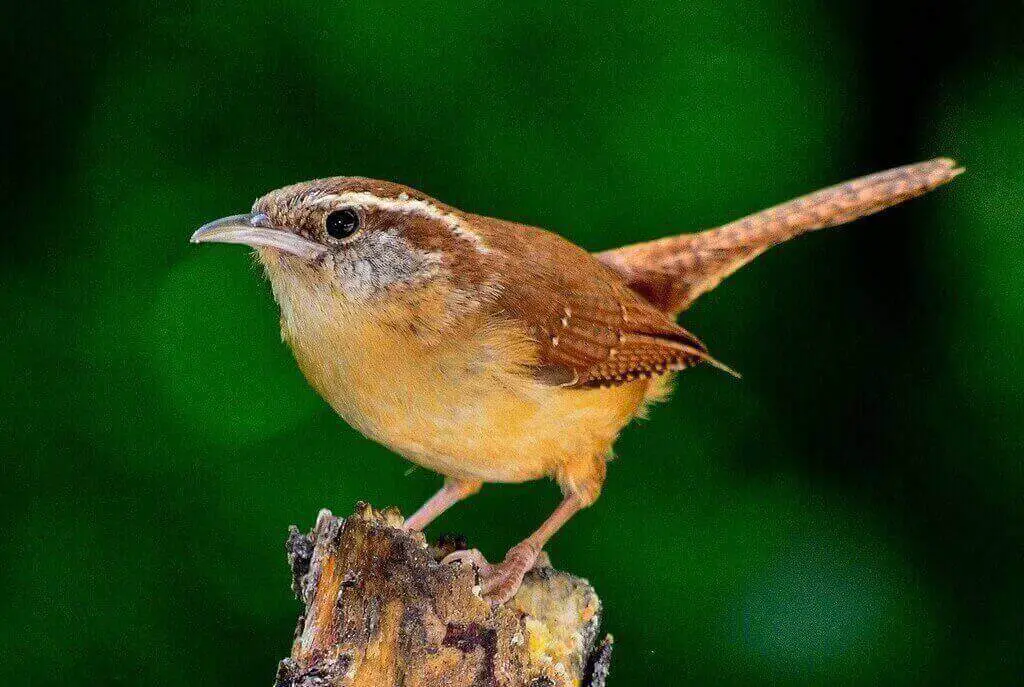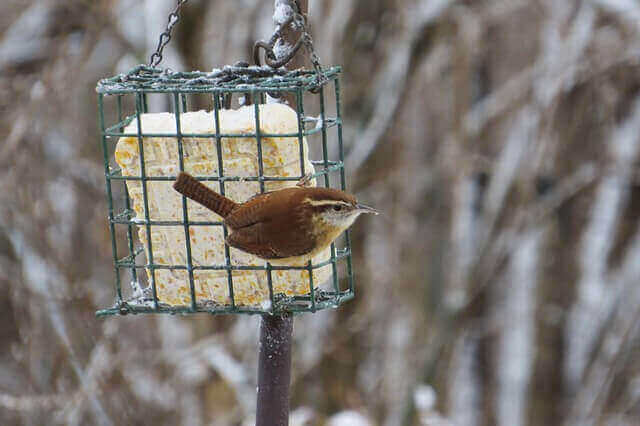Wondering how to attract wrens to your backyard? Wrens are small, active birds that can be drawn to your space with the right environment. Providing birdhouses, native plants, and food sources like insects can help make your backyard more appealing to these delightful birds. In this article, we’ll discuss simple steps you can take to create a welcoming habitat for wrens and increase your chances of spotting them in your backyard.
Click the Play button below to listen to our podcast:
Table of Contents
Types of Wrens in North America
Wrens, small but spirited birds belonging to the Troglodytidae family, are renowned for their vibrant songs. The Troglodytidae family is divided into 19 genera and contains 88 species. In North America, several common species stand out, including the Carolina, House, Bewick’s, and Cactus Wren.
These wrens are native to the mid-eastern parts of the continent, ranging from the southeastern areas of Canada to the northern U.S. and northeastern Mexico, with populations found across New England and both northern and southern Florida.
Here are some of the most recognizable wren species in North America:
- House Wren
- Carolina Wren
- Bewick’s Wren
- Cactus Wren
Using Feeders
Use bird feeders to entice them. You can even find many types of feeders to attract them to your yard. When trying to entice this bird it is recommended you use peanuts, peanut butter, meal worms or suet.
I would use the suet feeder over the tray or platform feeders. I find the suet feeder is best because it is not as messy as the platform or tray feeder, so you are less likely to have unwanted guests.
If you want to entice them, use this mess free Squirrel-proof Suet Bird Feeder, and I like to use it with this Peanut Butter Suet. Check out the reviews for both of these products on Amazon.
Food Sources
The majority of wrens eat small insects like flies, spiders, centipedes, snails, and beetles. They also eat fish eggs and nymphs and, if given the chance, other birds’ eggs, although they rarely feed on small ungulates.
They may also feed on fruits, but prefer to eat plants that are readily available. In addition, wrens like seeds, and like to eat aphids. In some areas, they may even eat carrion.
Flowers and Bushes
You can also them to visit by taking advantage of what you can grow in your garden or flowerbed. Wrens love eating pokeweed, serviceberry, burning bush and strawberries. These berries can be used in a variety of ways in order to entice them to your backyard.
Birdbath
One thing that you should have in your garden that the birds will enjoy is to include a bird bath. I would recommend, this stylish birdbath. You can pick it up from Amazon. These will provide them with a place to drink and bathe. It will help to keep their energy levels high and make them feel at ease. A heated birdbath is a good solution for winter.
Provide Shelter
Wrens often live in burrows or under eaves but will also build small shelters or hutches in their own trees. While nesting in these structures, these birds will sleep all night and only emerge to feed at dawn.
A good idea is to get a bird house or a roost box. If you have a one already, then you shouldn’t have to buy another one as the birds will probably return to the old one.
If you don’t have an existing one, then you might want to take a look at buying one, I would recommend a high quality one like the Woodlink Wren birdhouse. You can find it on Amazon.
The bird house or roost box should be roughly 5 – 10 feet off the ground. It is best to hang it from a tree, or you can also use a pole. Wrens prefer a shady area that is sheltered and has plenty of cover. Pick a spot that is secluded and safe from predators.
More Tips
- One method that works great is by smearing peanut butter onto the trunk of a tree. This is one sure-fire way to get them into your yard.
- Make sure that the birdbath is clean and clear and sanitized at all times. Clean the birdbath every few days with dish soap and water. This helps to keep any parasites from living in your yard, and it will attract more Wrens.
- Put up birdhouses near places where wrens typically live, such as dense brushy areas.
- Include plenty of bushes and low-growing plants for sheltering Wrens from predators.
- Leave some dead tree stumps in your garden as well as hollow logs.
- Be sure to put out water for your wrens throughout the day, as they need it constantly!
- Put up an artificial nest in the wren house and fill it with moss, grasses, leaves, feathers, string and wool.
- Place stones or twigs on the ground around trees so that they resemble tunnels for hiding places from predators.
- Place some pine cones around tree trunks for them to use as nesting material.
- Wrens are attracted by water. Place a bird bath or saucer with pebbles in it near where you want the wrens to come; they will drink from this all day.
- Offer up plenty of potential food sources like mealworms, fruits, black-oil sunflower seeds in the winter. Avoid white proso millet.
- Offer water and food – You should provide clean drinking water and also feed them high-quality bird seed during the winter months when natural sources of food are scarce.
Frequently Asked Questions
What month do house wrens nest?
They breed from late April to early September, and often start building their nests on ledges or outside walls of buildings in January or February.
Should a wren house face a certain direction?
For years, bird lovers have debated whether a wren house should face north or south. Some say that if the house faces south, it will get more sunlight and heat during winter months; others argue that facing the other direction provides more protection from predators. Wren don’t care which way the house faces as long as there is an opening for them to enter and exit from.
What color attracts wrens?
Wrens are birds that live in many habitats. They have a preference for bright colors such as red and yellow, which is why some wren houses have these colors on them.
Do wrens return to the same nest?
The wren’s most common nesting spot is a tree or bush, but it will also nest on the ground, in an abandoned birdhouse, even inside a pile of leaves. Wrens usually reuse their old nests, and sometimes they’ll reline or even rebuild them if they get destroyed by something like weather or predators.
What month do wrens lay their eggs?
In the Northern Hemisphere, most wrens lay their eggs in late April and early May. However, there are many exceptions to this rule, such as a male house wren that may start his breeding season in January or February and will sometimes not even stop until September.




